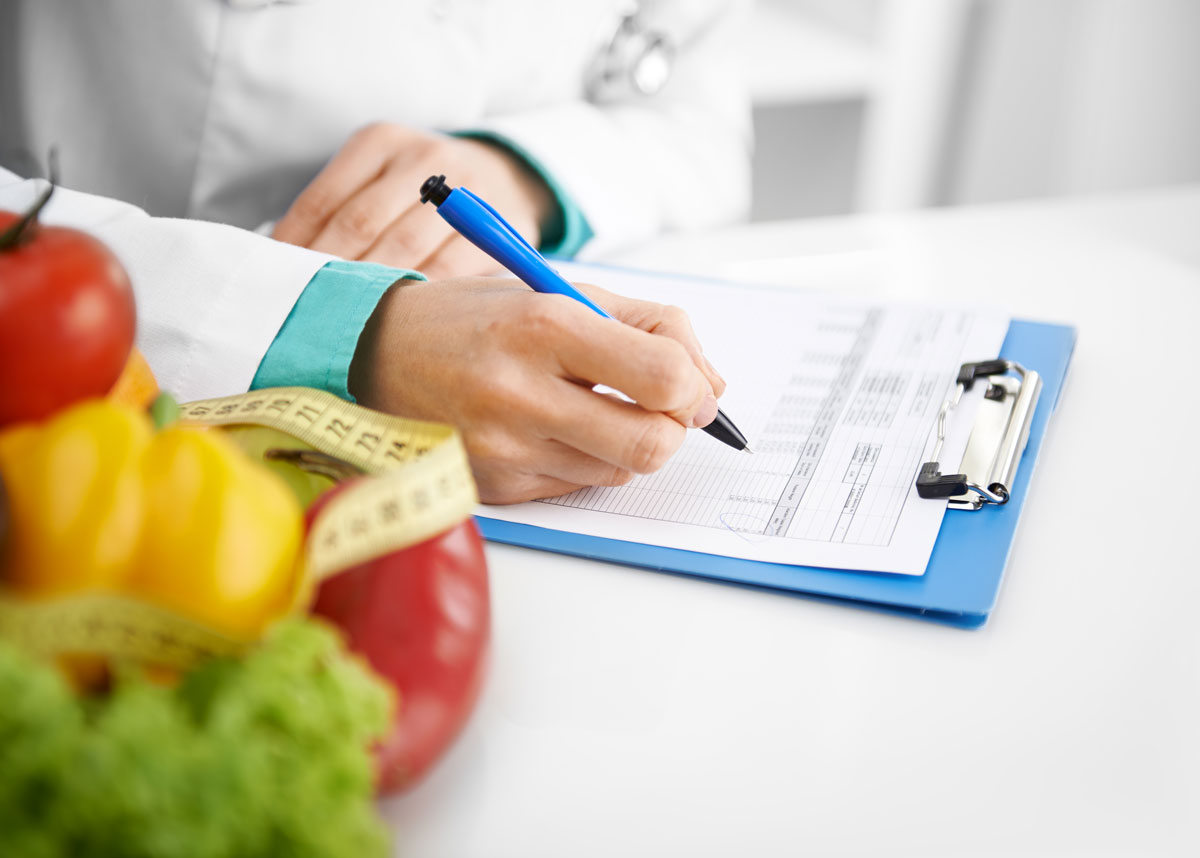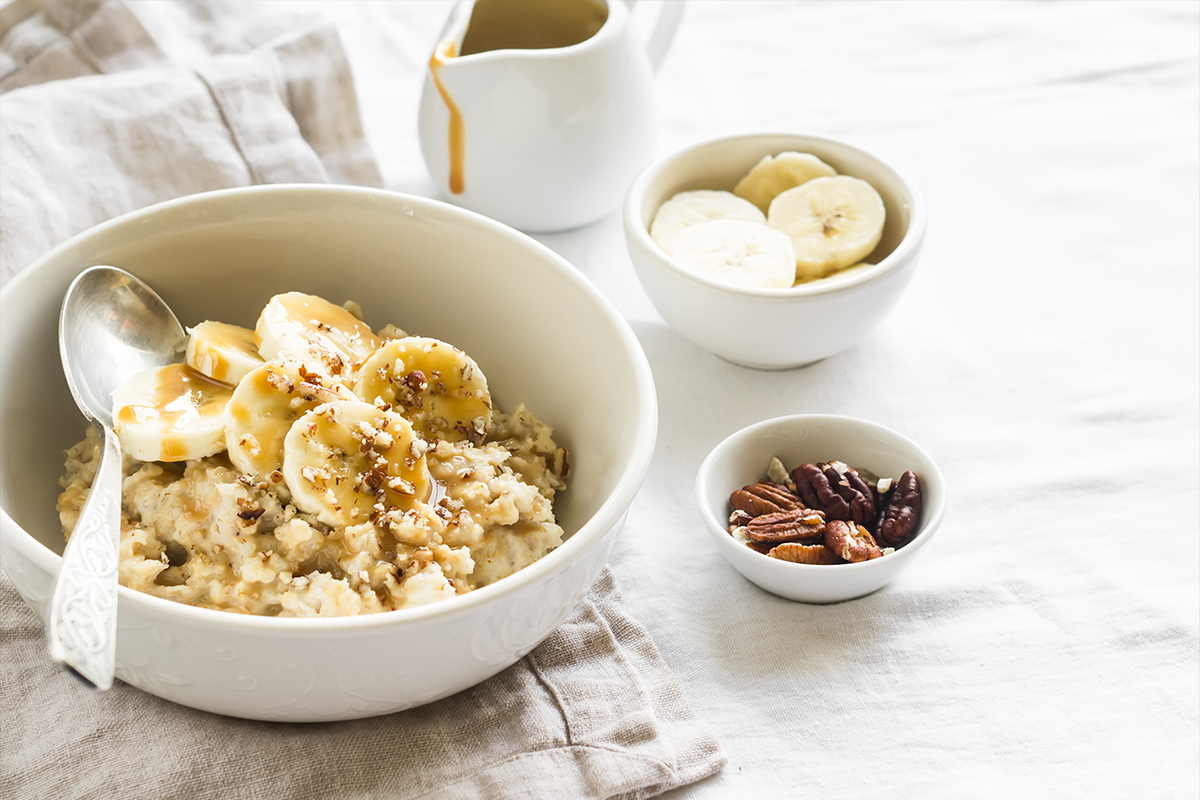How Much Protein Does Your Body Need?
One frequently asked question is about the recommended intake of protein. We hear you! Here is everything you need to know.

Counting calories during the holidays may as well be a task for only the mightiest among us. The effort either requires enormous willpower or a serious dislike for holiday dishes. Aside from the calories, however, the holidays are often a time when cooking and baking together is part of the joy of the season.
That is why we’ve scoured the internet to compile a list of holiday cookie recipes that are more merciful on your waistline than their classic counterparts. You’ll find that it is possible to enjoy the tastes of the season without succumbing to the siren call of comfy sweatpants.

01.
Recipe #1 – Vegan Peanut Butter Protein Cookies
This recipe by Chocolate Covered Katie is a no-bake take on classic peanut butter cookies! This version tosses the flour and substitutes it with protein powder! The addition of applesauce is a surprising twist, but, including it in the cookie “dough” ensures your cookies are moist and still sweet despite the reduced sugar content.

02.
Recipe #2 – Paleo Chocolate Snowball Cookies
Nothing says December like cold weather and snow-capped mountains. So, a natural season favorite would have to be Snowball Cookies! Arman Liew shares his festive recipe on The Big Man’s World. With only 4 ingredients, and no baking involved, you can see why this recipe is hailed as a simple yet delicious treat. No kitchen savviness required.

03.
Recipe #3 – Flourless Tahini Cookies
If you’re unfamiliar with Tahini, it’s a sauce or paste made from toasted sesame seeds. On its own, it can be somewhat bitter, though some people will eat it by the spoonful as a cough suppressant. Does it work? We’re not sure, but does it make some great cookies? Yes, yes it does. Try out this recipe by Jyothi on The Curry Trail and let us know what you think of this nutty, low-fat cookie!

04.
Recipe #4 – Low Carb and Sugar Free “Oatmeal” Cookies
With sliced almonds stepping in for oats, these “oatmeal” cookies are a low carb alternative to the real thing. The only actual oat component is some oat fiber which is added to give these cookies their texture. Recipe creator, Kim Hardesty, suggests substituting this ingredient for coconut flour if you want to go completely oat free. Check out her instructions on Low Carb Maven.

05.
Recipe #5 – Healthy Gingerbread Cookies
The holidays are not complete without the spicy snap of gingerbread cookies. Easy to make, fun to decorate, and delicious to share, this seasonal favorite now comes in a healthier recipe. You won’t find a trace of refined flour or sugar, or any butter (if you choose coconut oil) in these wintertime treats. You’ll also get some tips on how to get that perfect gingerbread man shape. The details are all here, on Amy’s Healthy Baking website.

06.
Recipe #6 – Gluten Free Paleo Coconut Cookies
These Coconut Cookies are Paleo friendly, vegan, gluten-free, and even dairy-free. This recipe calls for only 4 ingredients, but the secret to this baked good is in the technique, not in any secret ingredients or special substitutions. Demeter breaks down her process in a detailed step by step guide on Beaming Baker. Take a look!

07.
Recipe #3 – Flourless Tahini Cookies
We had to include a recipe that plays on the classic oatmeal raisin cookie. Naturally sweetened with honey and made with nutritious ingredients like oats, flaxseed, pumpkin seeds, and cranberries, these energy-packed cookies deserve more time in the day than just breakfast. Regina’s popular recipe can be found on Leelalicious.

08.
Recipe #8 – Skinny Snickerdoodles
We close off our list with another recipe by Chocolate Covered Katie because making snickerdoodles healthy looks like a tough undertaking, and this recipe looks just right. With different options for your flour and sweetener, and only a quarter cup of butter, skinny snickerdoodles look like a great addition to our holiday cookie list. Fill your kitchen with the smells of warm cinnamon and watch everyone within sniffing distance come by to investigate.
It’s okay to indulge in a few healthier snacks this season, and of course, moderation is key. Some treats, like dark chocolate and almonds, even have some health benefits. To keep from over-indulging, read our registered dietitian’s Super Snacking Guide for ideas on how to keep your snacking on the healthy side. To access our monthly blog post highlights, subscribe to our newsletter today!


Hi, I was wondering on how to select the correct macro grams for my diet.
I am a member of team Canada world baton team and train for the sport 4 days a week for about 5 hours. I also attend weekly yoga classes and do cardio workouts 3x a week along with some basic weight training 3x a week. I am 24 years old, 5 foot 6 inches, 160 lbs. and eat between 1,500-1,800 calories.
Thank you
– Lindsay B.

You are undereating calories compared to your estimated energy needs* given your age, anthropometrics and stated workout routine making your first priority to meet minimum recommended protein amounts.
Based on your stated level of exercise, protein requirements will fall in the range of 1.2-1.5gm/kg, which calculates to 87-110 grams of protein per day (<26% energy intake). However, because you’re possibly not meeting energy needs with adequate carbohydrate and fat, it’s safe to increase protein to 2.0gm/kg daily.
Carbohydrate should comprise about 50-60% of your energy intake. For your stated caloric consumption, that would calculate to 225 grams carbohydrate daily (1800 x 0.5 ÷ 4cals/gm). Remember, that is a baseline amount given my suspicion that your energy intake is low.
A healthy fat intake may range from 20-35% of energy consumed. If we take the average of your recommended protein plus the carbohydrate total above, that’s 1292 calories (323gms x 4cals/gm) leaving you with 508 calories for fat. Those 56 fat grams should be from healthy unsaturated sources, preferably plant foods like avocado, oils and coconut.
* Energy needs calculated from Harris-Benedict or IOM equations are 2600-2800 calories per day.
Resources:
Kerksick, CM and Kulovitz, M. (2013) Requirements of Energy, Carbohydrates, Proteins and Fats for Athletes. In Nutrition and Enhanced Sport Performance Chapter 36, (pp. 355-366).
Webb D. Athletes and Protein Intake. Today’s Dietitian June 2014; 16 (6): 22.
– Debbie J., MS, RD
This article should not replace any exercise program or restrictions, any dietary supplements or restrictions, or any other medical recommendations from your primary care physician. Before starting any exercise program or diet, make sure it is approved by your doctor.
Some questions have been edited for length and/or clarity.
 Have a nutrition question? Our registered dietitian is ready to help!
Have a nutrition question? Our registered dietitian is ready to help!
Email nutrition@lafitness.com or submit your question below and it may be featured in an upcoming article!
One frequently asked question is about the recommended intake of protein. We hear you! Here is everything you need to know.
Counting calories during the holidays is tough! These healthier cookies are not, and they’ll please your palate without sabotaging your health goals.
Debbie James, RDN, helps answer a reader’s question on macros.


Hello. I have a couple of questions on diet and nutrition if I may ask. I’m an 18-year-old male. I currently weigh ~143-146 lbs. I want to take on bulking but I’m not sure on what meal plan to use. Would you be able to help me out or point me in the right direction?Currently I have a full-time job with overtime, but I still manage to go to the gym almost every day even though I’m tired. I eat breakfast around 4am before work, pack myself 2 lunches, and also eat dinner around 6-8pm. I greatly appreciate any advice I can get from you guys. Couldn’t be happier with the gyms and the sauna by the way. Thanks
– Joshua A.

Thanks for the compliment! A specific meal plan would depend on your lifestyle and food preferences in addition to your anthropometrics and weight gain goals. Working up a meal plan from scratch isn’t daunting – see our article How to Create a Meal Plan. You’d want to focus on increased calories and protein. That said, I realize following an already set list is desirable. If you’re set on that, I’d suggest a mass-building meal plan developed by a sports nutritionist such as a Certified Specialist in Sports Dietetics (CSSD).
My top diet tips for bulking include:
Time it right. Fuel your muscles properly pre- and post-workout to capitalize on the surge of hormones driving anabolism. The nutrition window to boost protein synthesis is considered about 30 minutes before and after weight training. Easy to digest lean proteins and low-fiber carbohydrates are the prime choices. Examples are whey shakes, egg whites, poultry breast, bagels, and pretzels.
Resources:
– Debbie J., MS, RD
This article should not replace any exercise program or restrictions, any dietary supplements or restrictions, or any other medical recommendations from your primary care physician. Before starting any exercise program or diet, make sure it is approved by your doctor.
Some questions have been edited for length and/or clarity.
 Have a nutrition question? Our registered dietitian is ready to help!
Have a nutrition question? Our registered dietitian is ready to help!
Email nutrition@lafitness.com or submit your question below and it may be featured in an upcoming article!
One frequently asked question is about the recommended intake of protein. We hear you! Here is everything you need to know.
Counting calories during the holidays is tough! These healthier cookies are not, and they’ll please your palate without sabotaging your health goals.
Debbie James, RDN, helps answer a reader’s question on macros.


Hello! I was wondering if you could help me determine how much protein I should be eating everyday. I’ve heard so many things. I am 24yo female, I strength train 4 days a week and do yoga 1x a week to break that up. I may be switching that up a bit, but wanted to get a good idea on how to calculate it (if that’s how it works). Thank you.
– Erol B.

The headlines (and advice) are confusing! Between “most healthy adults already get enough protein” and “US adults do not consume enough protein” there is a grey area of observation, based on how the research is interpreted. On the one hand, people that meet energy needs probably meet protein needs, while those that are dieting, recovering from illness or are aging may need more.
For a fit, healthy young adult who is consuming adequate calories to maintain weight, use the protein RDA of 0.8 gm/kg body weight as the guide. Using a range for percentage of calories from protein is less precise. From pounds, divide weight by 2.2 to get kilograms then multiply by 0.8 to get your target amount of daily protein. If you are looking to add lean mass then increasing protein to 1.2 gm/kg is suitable.
To determine if you’re meeting your goal, use a reliable source to count up your protein intake. Check that a diet app or website you’re using relies on the USDA Food Composition Database.
Resources:
– Debbie J., MS, RD
This article should not replace any exercise program or restrictions, any dietary supplements or restrictions, or any other medical recommendations from your primary care physician. Before starting any exercise program or diet, make sure it is approved by your doctor.
Some questions have been edited for length and/or clarity.
 Have a nutrition question? Our registered dietitian is ready to help!
Have a nutrition question? Our registered dietitian is ready to help!
Email nutrition@lafitness.com or submit your question below and it may be featured in an upcoming article!
One frequently asked question is about the recommended intake of protein. We hear you! Here is everything you need to know.
Counting calories during the holidays is tough! These healthier cookies are not, and they’ll please your palate without sabotaging your health goals.
Debbie James, RDN, helps answer a reader’s question on macros.


Greetings Nutrition: I am trying to get back in shape. I have a trainer at LA Fitness, and I think that I need to eat better. Could you give me some ideas of how I should be eating? Or a good meal plan that I can follow? I have been given a 1,416 calorie per day limit. Macros are: Carbs 203 grams, Fat 84 grams Protein 65 grams. I am having a hard time finding good breakfast options and making my protein of 65 grams daily. I don’t eat eggs so that cause problems for breakfast. I pretty much eat everything else. Any help that you can provide would be greatly appreciated.
– Eric H.

First and foremost, your provided macronutrient targets provide 1,828 total calories (812 calories carbohydrate, 756 calories fat, 260 calories protein), a considerable difference from your caloric limit. If the goal is qualitative, then the approach should be more precise. Not knowing which is more important for you, I’d go with the higher caloric target as you are working out and 1,400 calories may only be appropriate for significant weight loss, older or smaller-framed men.
We don’t provide meal plans, though several sample meals can be found throughout our Living Healthy blog. Since breakfast is the most challenging meal for you, here are some breakfast suggestions that provide roughly 550 calories.* I’ve broken that down as approximately 60 gram carb, 25 gram fat and 20 gram protein.
By working on your own lunch and dinner options, you can get close to the remainder macronutrients for the day. Quality can’t be overlooked, though! Foods with high micronutrient, fiber and unsaturated fat content will make a big difference even if you’re slightly off your gram or calorie goals.
* Calculated by Registered Dietitian Nutritionist using Fitday.com’s food log function. Findings were used along with RDN’s professional judgment.
– Debbie J., MS, RD
This article should not replace any exercise program or restrictions, any dietary supplements or restrictions, or any other medical recommendations from your primary care physician. Before starting any exercise program or diet, make sure it is approved by your doctor.
Some questions have been edited for length and/or clarity.
 Have a nutrition question? Our registered dietitian is ready to help!
Have a nutrition question? Our registered dietitian is ready to help!
Email nutrition@lafitness.com or submit your question below and it may be featured in an upcoming article!
One frequently asked question is about the recommended intake of protein. We hear you! Here is everything you need to know.
Counting calories during the holidays is tough! These healthier cookies are not, and they’ll please your palate without sabotaging your health goals.
Debbie James, RDN, helps answer a reader’s question on macros.
Be the first to know about exclusive
content, deals and promotions